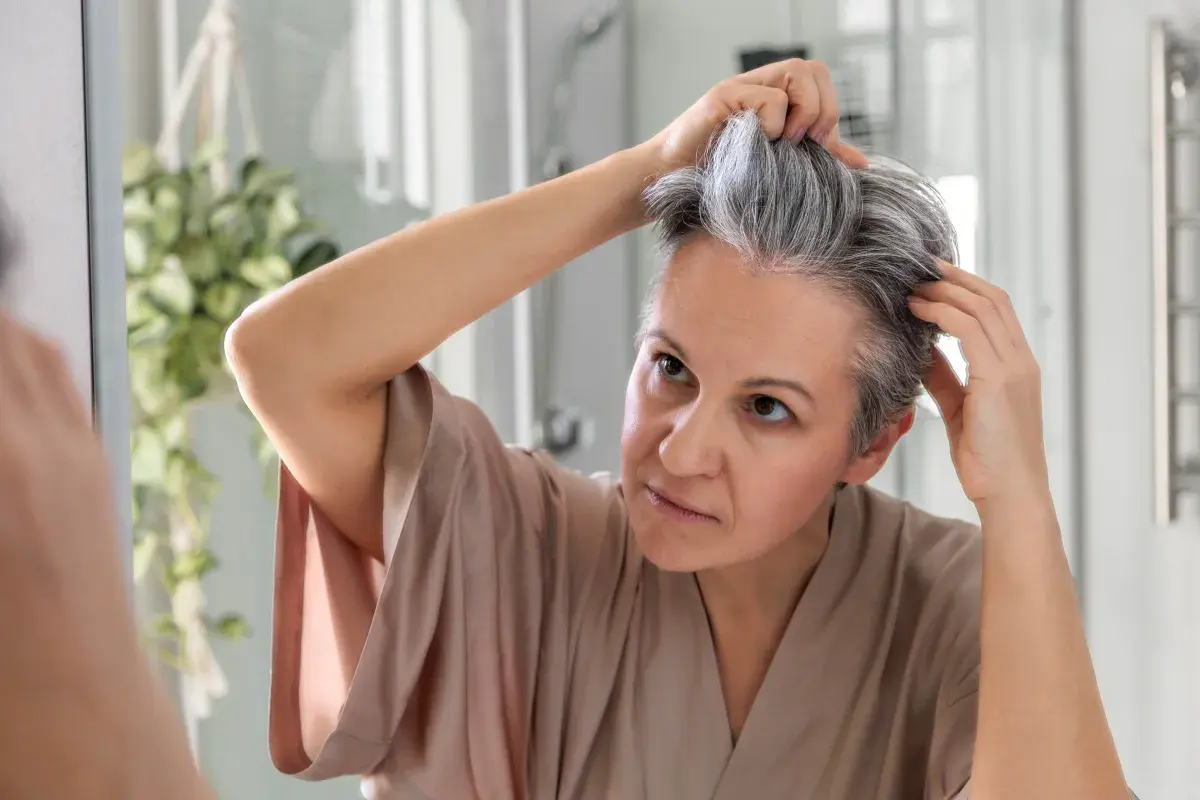Copyright Newsweek

Going gray may be more than just a sign of aging—it could reflect the body’s natural defense against cancer, according to new research exploring how hair follicle stem cells respond to DNA damage. The average age for graying is mid-thirties in Caucasians, late thirties in Asians and mid-forties in Africans—yet only 6 to 23 percent of people aged 45 to 65 have more than half of their hair turning gray. Throughout one's life, cells are constantly exposed to environmental and internal factors that can harm DNA. While such damage has long been tied to both aging and cancer, scientists have struggled to understand the exact mechanisms linking the two—particularly how damaged stem cells affect tissue health over time. Melanocyte stem cells (McSCs)—the stem cells responsible for hair and skin pigmentation—play a key role in this process. These cells, which reside in the so-called 'bulge-sub-bulge' region near the base of hair follicles, generate mature melanocytes that give hair and skin their color through cyclical regeneration. In their study, University of Tokyo professors Emi Nishimura and Yasuaki Mohri have shed light on what happens when these pigment-producing stem cells are damaged. The researchers used long-term in vivo lineage tracing and gene expression profiling in mice to analyze how McSCs react to different kinds of DNA damage. The team discovered that when McSCs face DNA double-strand breaks, they undergo a process called senescence-coupled differentiation, or "seno-differentiation". This mechanism forces the cells to irreversibly differentiate and die off—leading to hair graying. The process is driven by activation of the "p53–p21 pathway," a tumor-suppressor mechanism. In other cases, however, the cells don’t follow this self-destructive route. When exposed to cancer-causing agents or to ultraviolet B light, McSCs can bypass this protective response. Instead of dying, the damaged stem cells keep their ability to self-renew and increase in number by cloning—pushing them towards a tumor-prone state. “These findings reveal that the same stem cell population can follow antagonistic fates—exhaustion or expansion—depending on the type of stress and microenvironmental signals,” Nishimura says in a statement. “It reframes hair graying and melanoma not as unrelated events, but as divergent outcomes of stem cell stress responses.” The study doesn’t claim that graying hair directly prevents cancer. Instead, it suggests that seno-differentiation acts as a natural protective mechanism, eliminating potentially dangerous cells. When this process is bypassed, damaged stem cells can persist, increasing the risk of melanoma. Do you have a tip on a health story that Newsweek should be covering? Do you have a question about going grey? Let us know via health@newsweek.com. References Maymone, M. B. C., Laughter, M., Pollock, S., Khan, I., Marques, T., Abdat, R., Goldberg, L. J., & Vashi, N. A. (2021). Hair aging in different races and ethnicities. Journal of Clinical & Aesthetic Dermatology, 14(1), 38–44. https://jcadonline.com/hair-aging-races-ethnicities-review/



